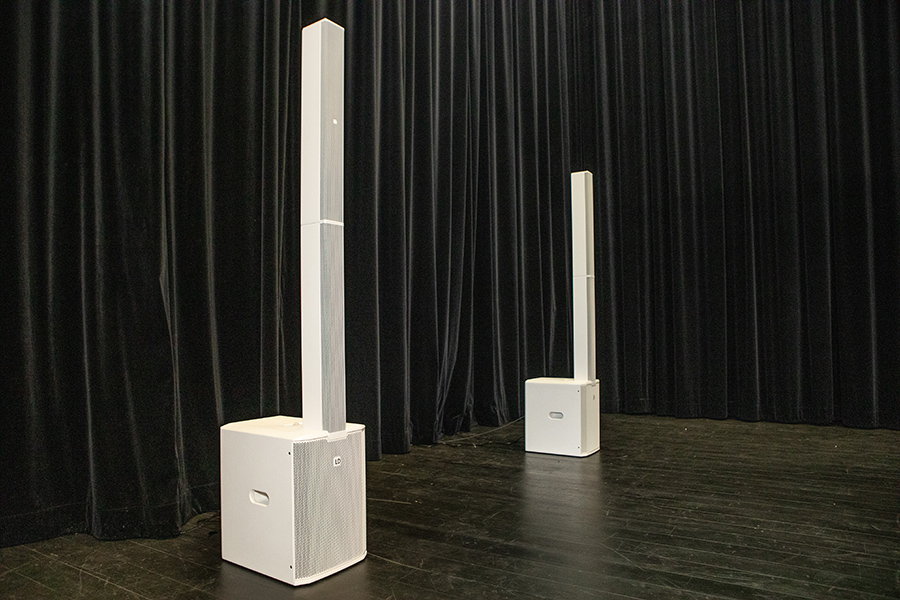Two models make up the new range of sound reinforcement systems from German manufacturer LD Systems: the Maui 11 G3 and the Maui 28 G3. It’s the latter of these that we’re going to take a closer look at here and, more importantly, listen to.
Without any mixing capability or microphone or instrument inputs, the 28 G3 is designed to offer no-nonsense sound, but with a 16 A power supply! Versions with a very nice mixer will arrive in January 2024.
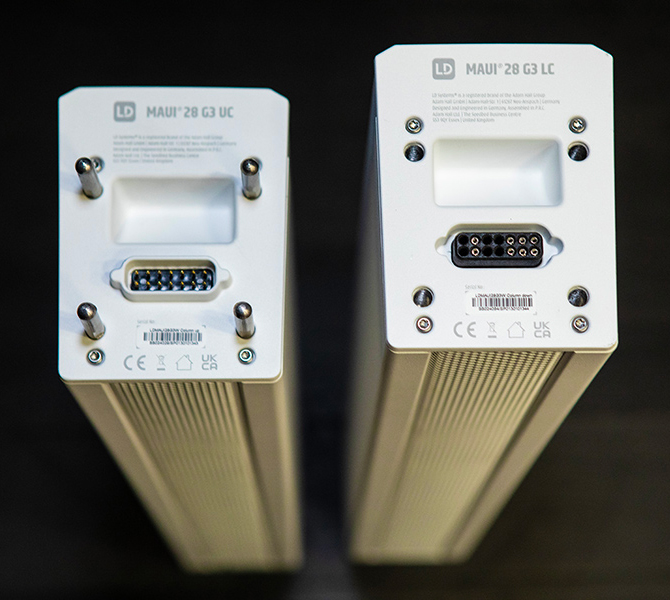
The size and weight of the enclosures make it clear that LD Systems didn’t choose composites for the cabinets, nor neodymium for the magnets (except for the two tweeters at the top).
The subwoofer cabinet is constructed in 15 mm plywood, while the midrange and mid/high elements are in die-cast aluminum.
Numerous conveniently located handles on all three elements make them easy to manage, but the optional roll-board seems a wise investment for moving the complete, 37 kg system.
For this listening session, we were fortunate to have a stereo set-up – i.e. two subs and two mid/high columns – which, as you’ll read below, allowed us to review the standard mode, but also the configuration with two subs per head and, finally, the cardioid mode.
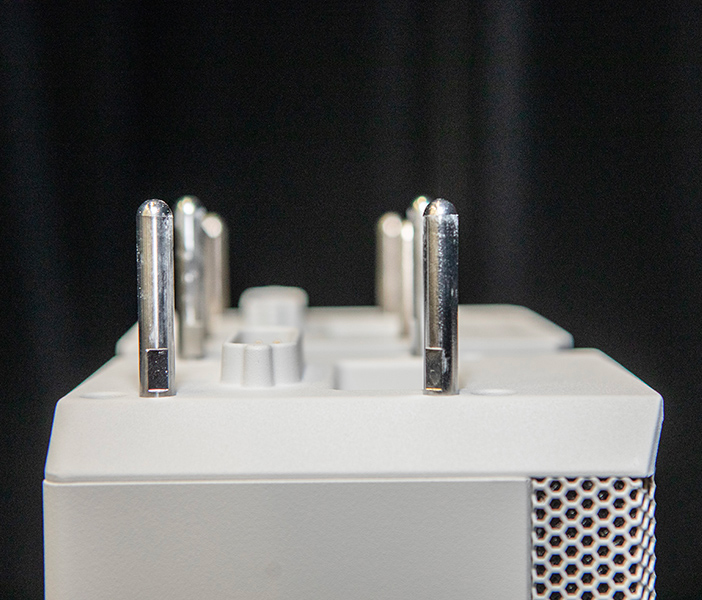
Assembling the column is no problem at all. The two elements of the column interlock securely with each other, thanks to steel posts, with notches that act as locks, that mate with holes. The top element is different from the bottom in that it has a cover on one end, while the bottom element has the holes on one end and the posts on the other.
We encountered significant, but perfectly normal, resistance when inserting and removing the posts, as our test system had been used very little but, with use, everything should get easier. The solidity of the assembly is reassuring, despite its 2-meter height.
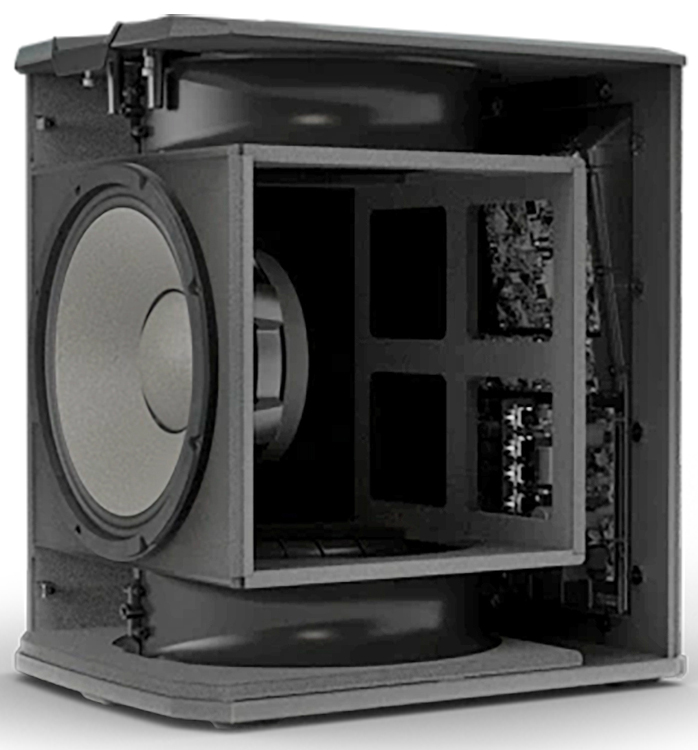
Each sub features a serious 12″ transducer with a ferrite magnet, 3″ voice coil and a maximum excursion of 30 mm, loaded in bass reflex via ellipsoidal rear-wave ports. No need to add unnecessary suspense: it works well. Neither the cabinet nor the vents reveal any problems, even at very high levels.
Mounted on the back, the amplifier module drives both the 12″ and the array of 3.5″ drivers – 12 in all – loaded by a well-designed phase corrector, and featuring a rear opening that imparts true cardioid behavior between 100 Hz and 1 kHz.
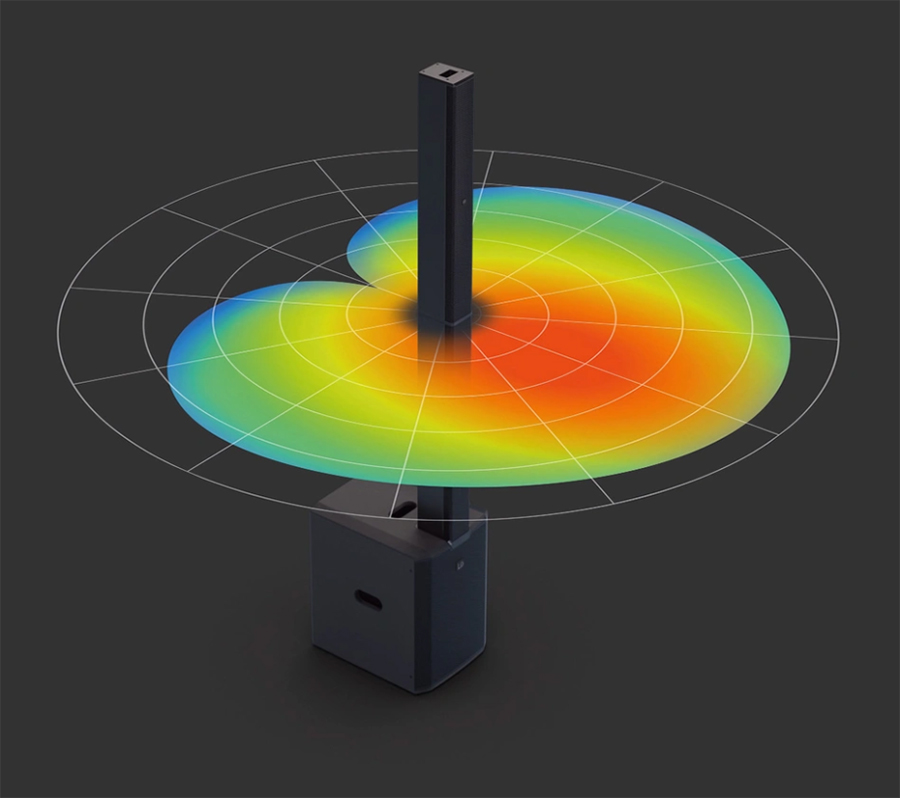
Finally, two one-inch tweeters handle the high end of the spectrum, thanks to an angled wave guide located at the very top of the column, at a height of two meters. The overall coverage is 120° horizontally by 30° vertically.
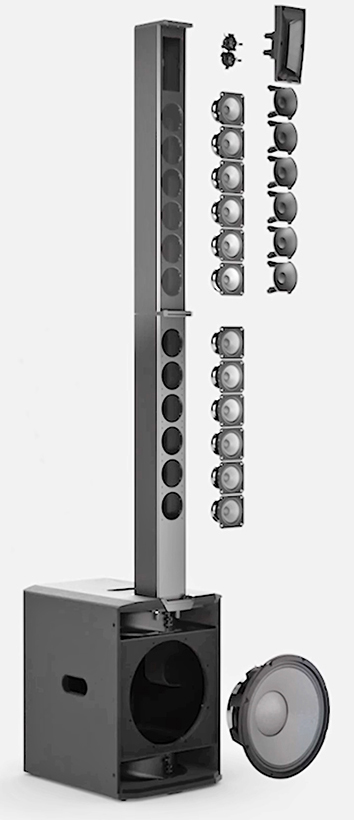
The amplifier module is equipped with a latest-generation DSP from LD Systems, operating at 48 kHz/24 bit, the task of which is simply to make it easy for the user of this type of system. A multi-band limiter is responsible for delivering a maximum SPL of 127 dB, whatever the incoming signal and, above all, whatever the level.
1 kW is divided between low and high frequencies, with a passive crossover feeding both tweeters. A FIR filter is used to transition between the low and the mid/high frequencies. We’ll talk a little later about the capacity of this processing to compensate for the overload that is often fed to this type of system.
The rear panel is equipped with stylish, but rather inconspicuous LEDs to indicate clipping.
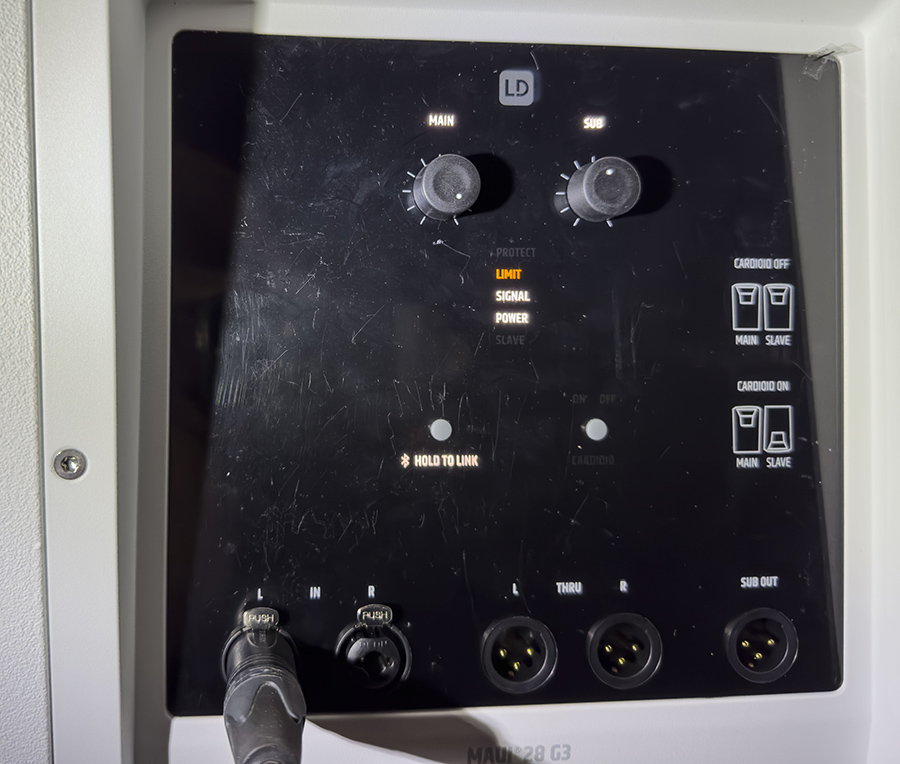
Designed for customers who don’t want to make life difficult for themselves, or for those who might rent the Maui 28 G3, it offers some very nice automatic features, such as automatic recognition of the presence of the column connected to the sub. Without the column, the “follower” sub next to the one with the column has its level settings and Bluetooth input disabled.
Two options are available: An additional 6 dB of gain by aligning the two subwoofers in phase, or a cardioid mode by turning the second sub 180° and selecting the mode via the dedicated button. This provides extra energy towards the front and cancels some of the rear output.
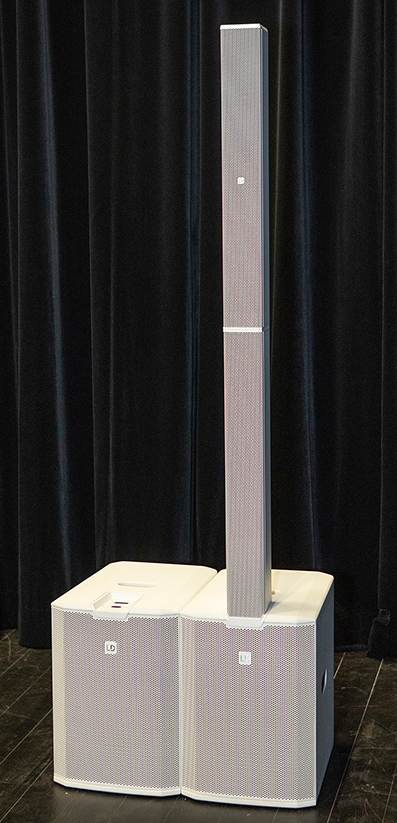
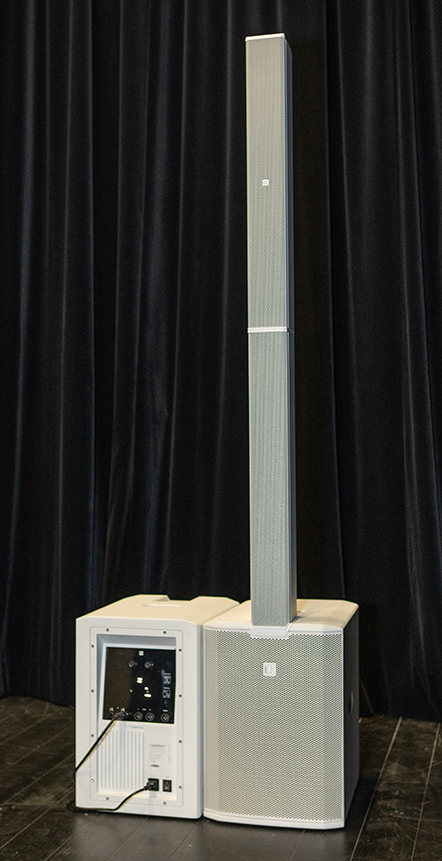
Listening to it
To evaluate the potential and audio performance of the Maui 28 G3, we deployed it on a 200 m² stage, 20 meters long and 10 meters wide, with a capacity of 300 to 450 people. Sound sources included tracks with little or no mastering, instrument extracts and, deliberately, a few hits with a cruel lack of dynamics. Most of these were in high-resolution.
A top-of-the-range Rockna Wavelight converter was used as the sound card and, above all, as a guarantee of impartiality, thanks to its uncompromising neutrality and balanced outputs.
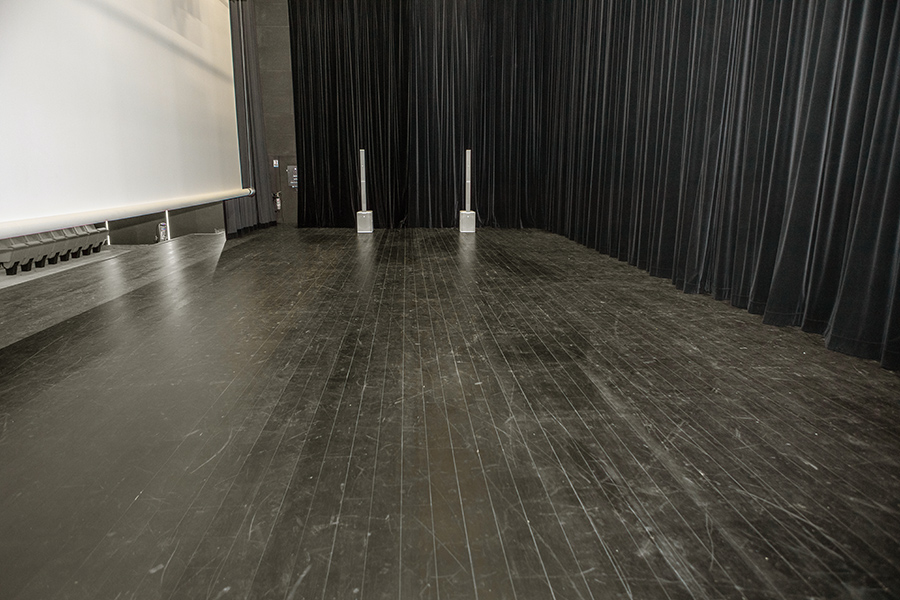
Our very first impression is of the fidelity of the sound, which is balanced, fairly extended and devoid of aggressiveness. Without being overly analytical, the treble is clear and precise, passing sibilants without harshness. The upper midrange is powerful and takes full advantage of the two drivers placed at the top of the column.
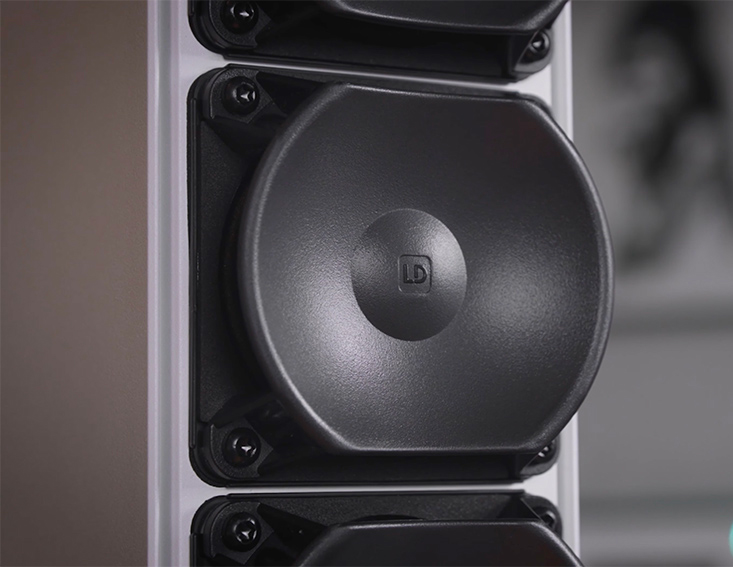
The midrange and lower midrange delivered by the dozen or so 3.5″ units have good energy and impact, making for a very fine snare drum sound, for example, but without any particular color.
The crossover to the bass is natural, and the 12″ pushes well forward with fairly high definition. Its punch lends precision and body to low notes, say 4-string basses; less so when venturing lower.
The dynamics are rather generous, and it’s easy to find a satisfactory contour, no matter what color you’re looking for, as long as you don’t push the sub level too much, as it acts as a bass reinforcement rather than adding pressure and mud to a full-range loudspeaker. If you overload the bass, you’ll cover up its useful range with a bump around the crossover frequency.
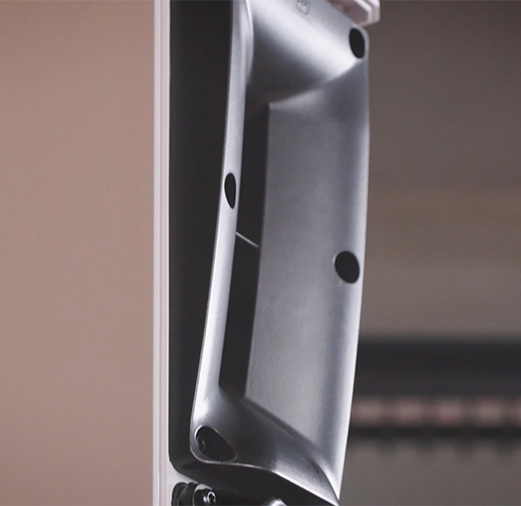
The coverage is uniform, with no inconsistencies or unpleasant gaps. The 20-meter range is covered with great left-right summation compared to the system by itself. The carefully designed waveguide allows the treble to tackle this distance with confidence, with perfect distinction on the vocals.
The lower end of the spectrum has a little more difficulty at this distance, which is to be expected with highly dynamic music, but does better with contemporary tracks.
It’s quite easy to trig the limiters, the bass first, and, as with any loudspeaker, you can’t expect to get the maximum SPL at full range. Nonetheless, by the time you have managed to activate the protection circuit, the level is very high, and sufficient for a 150-200 m² space. The sound remains impressive, and the distortion of the multi-band limiter is acceptable as long as you’re reasonable.
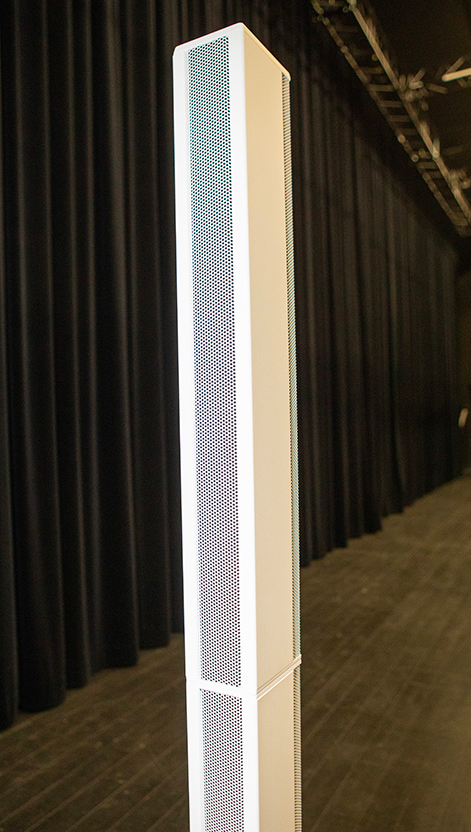
The calibration is well conceived, and at no point do you notice any spectral imbalance, for example, with the high midrange coming up too much once the bass is on the strings. If you push it too hard, it bites and chews, but you don’t get the impression that the amplifiers or transducers are running out of steam, which is a good thing.
Of course, we tried out the two modes of using a second subwoofer. In +6 dB additive mode, you gain a lot of energy, but not necessarily where you want it. You’ll need an external equalizer, or one in the console feeding the configuration, to bring out the extreme low frequencies.
The cardioid mode works, providing genuine rear attenuation, but less than expected, and a little more frontal volume. It’s up to you to test this process and judge whether it’s worth the effort, bearing in mind that the flexibility offered by this system will allow you, if need be, to rotate the two subs in 10 seconds, disengage the cardioid mode, and regain some useful power.
Conclusion
To sum it all up, the Maui 28 G3 effectively meets the need for a simple, portable, attractive and affordable sound system, and can offer many small venues, event organizers, DJs and public institutions a reliable and elegant answer to the need for sound reinforcement. In our opinion, the single left-right configuration offers the best price/performance ratio.
Finally, to guarantee the durability and portability of the various components, in addition to the roll-board, LD Systems offers padded covers for the subs, and special padded bags to protect the two powder-coated aluminum sections of the columns.
Retail price for a Sub and Column set: €1,298 excluding VAT
Retail price for a Sub alone: €848 ex VAT
Further information can be found on the LD Systems website



